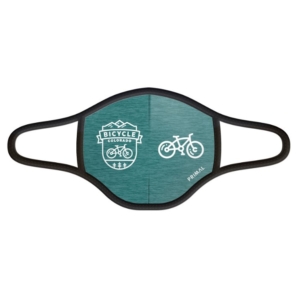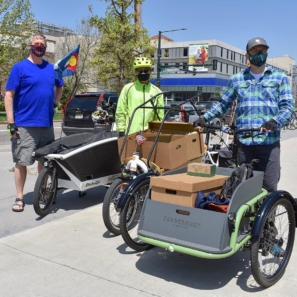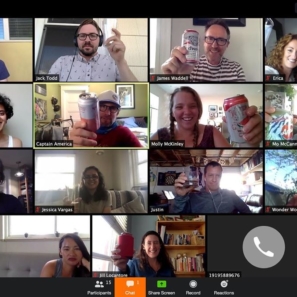The good, the bad and the weird in Colorado’s 2021 transportation funding bill
When the 2021 session started (and stopped, and then started again) we knew that among the COVID-relief efforts, healthcare and education debates, and road safety bills we’d be tracking, there’d be another legislative attempt at funding transportation.
What we didn’t know in early January was that the Governor would put his weight behind the effort to press for a full scale change on how we fund Colorado’s transportation system. The result? After multiple years of failed attempts, 2021 is looking like the year where compromise and change may win the day and a new set of funding mechanisms and transportation priorities may be voted into place.
At Bicycle Colorado, we have been advocating all along the way to be sure that bicycling and other multimodal investments were both included in the effort and set up for future success. Alongside a cohort of environmental advocates our efforts have made a difference, but still, we know that this year’s transportation funding bill can and should do more to fund safe infrastructure for bicyclists and others who opt to—or need to—leave the car behind for any reason.
One aspect of the proposed bill that we believe is worth celebrating is that it fundamentally changes how we fund transportation in Colorado, both in terms of how the state raises the dollars and how it allots them. This has not been the typical dialogue about transportation funding, where the debate is either about raising the gas tax, getting a voter approved sales tax, or carving out more dollars from the state’s general fund. Instead, lawmakers have shifted the funding paradigm entirely—looking to road users to pay into the system by using fee structures for everything from deliveries and rideshare, to registration and fuel fees. This approach represents a seismic change, and a positive one, that sets Colorado on a course to use polluter pay and congestion mitigation principles that support a shift toward sustainable transportation.
A brief look at how we got here:
- February: Governor Polis announced his interest in and support for a transportation bill
- February – April: Bill sponsors hosted 130+ stakeholder meetings. Bicycle Colorado and partners advocated for additional mobility funding buckets and increased multimodal funding
- March 18: Sponsors release an initial bill framework
- April: Bicycle Colorado and partners submit multiple formal revision requests to improve the bill
- April 29: Sponsors released an amended bill framework with millions more in multimodal funding
- May 4: Bill is introduced
- May 10: Bill heard by the Senate Finance Committee
Below, you can find a list of some of the things we like about the funding allocations in the bill as introduced, and some of the things we don’t. On the whole, “The Good” listed below is just that—good, but nothing more. It’s our belief that every item listed within that category should receive more funding, while every item listed in “The Bad” should either receive less funding or represents misguided policy. Prioritizing funding for sustainable, multimodal transportation options like bike lanes and safe road shoulders is the only way to encourage people to choose bikes and other sustainable transportation options while reducing our roadway safety and global climate crises. This bill does not yet meet the moment in any of those regards.
The good
eBikes are specifically identified and included for electrification funding opportunities. This means agencies like the Colorado Energy Office could invest in more programs that create equitable access to eBikes for low-income Coloradans, such as the Can Do Colorado eBike program we helped launch last fall.
$85 million in new dedicated funding is reserved for CDOT’s innovative Main Streets program. Continued support for local governments that retrofit their main streets and create more liveable, bikeable and walkable areas is a step forward for our communities across the state.
Over $1 billion is accessible for multimodal transportation projects to boost bicycling and transit. Our advocacy helped increase the amount of a specific Multimodal Transportation and Mitigation Options Fund (MMOF) from $336 million to $450 million with additional matching options in the bill from local dollars that can double the amount.
Nearly $950 million will go to local governments for any use. Local areas, which know their needs best, can build local projects—including multimodal projects. Local governments are incentivized to use the dollars on multimodal projects because they can use their share to match MMOF funds.
$184 million will fund projects in non-attainment (bad air quality) areas. Funds were increased from the initially allotted amount of $106 million, and they’ll boost efforts to offer multimodal options in areas where greenhouse gas emissions exceed federal standards.
Statewide and rural transit will benefit. Expansions are in line for Bustang and new Mobility Hubs across the state.
The bad
The Good listed above still is not enough. The bill takes some strong steps forward, but perpetuates what exists already and road funding still gets the most dollars. To create a balanced system, multimodal options need to be the priority focus of the overall bill and in every funding bucket.
Revitalizing Main Streets receives only $85 million over 10 years from the bill. This can be a much more transformative investment if it is funded at the level we recommended ($500 million over 10 years).
The trend of maintaining roads without adding or maintaining road shoulders for bicyclists to ride on will continue until CDOT changes its internal policies. Only 166 miles of roadways in CDOT’s 10-year plan are guaranteed to get 4-foot or wider road shoulders.
A substantial portion of the funding is for CDOT’s 10-year plan, which is primarily focused on roads and includes just a handful of signature bike projects. This means most of the new dollars generated by this bill won’t help complete new safe ways to bike from town to town.
EV investments don’t solve Colorado’s roadway safety crisis. The bill will result in incentives for Coloradans to purchase electric vehicles (EVs), but EVs are still cars. A transition to cleaner cars does nothing to prevent an additional 600 people from dying on our roads each year. It’s great when people drive a car that doesn’t pollute, but that doesn’t create more safe road space for bicyclists.
Highway projects continue to hog most of the dollars. Expensive highway road widening projects incentivize people to drive instead of choosing other options, and congestion returns to previous levels after only a few years. These projects will continue to pollute, make personal transportation expensive, and add more car trips to crowded shared street space.
The burdens on low income communities and communities of color from highway widening impacts will continue. The bill lacks focus and clarity on measures needed to identify and reduce those burdens, and puts too much of the onus on impacted communities rather than taking proactive steps to resolve these problems.
The weird
The bill defines autonomous delivery robots—and we’re not sure that’s a good thing. If robot delivery becomes widespread, it may ultimately mean better bike and sidewalk conditions, but in the interim we’re not sure bicyclists want to compete with AV robots.
The takeaway
From February, when the legislature started work in earnest, we coordinated our efforts with other environmental and mobility organizations. We worked to demand multimodal funding and to counter traditionalist messaging from groups that wanted funding to go almost exclusively to road and bridge projects for automobile travel.
We fought for more multimodal funding, more flexibility and dollars for locally funded projects, dedicated dollars for multimodal investment in polluted and heavily congested areas, and to establish a distinct fund for CDOT’s Revitalizing Main Streets program that helps local Colorado communities retrofit their main streets to be more liveable, bikeable and walkable. From an initial set of recommendations that tilted sharply toward funding expensive highway projects, we demanded shifts in the funding allocations that now allow for almost half of the over $5 billion package to be used for multimodal efforts.
We’re proud to have helped move the needle in key areas, and set the Colorado transportation funding structure up for success in the future. We are also acutely aware that the bill does not go as far as it needs to in order to:
- rebalance road spending patterns
- create more safe, bikeable spaces
- shift trips away from single occupancy vehicle trips to sustainable transportation options like biking and transit
Though there are many small improvements that will make the biking experience better, there aren’t enough new safe lane miles guaranteed in the bill. We continue to speak with legislators about their priorities in this bill, and have already started discussions with CDOT on the lack of signature bike-ped projects and their road shoulders policy to get at these big barriers, but…
We need you to raise your voice as well.
Your support makes our advocacy possible
Become a member during our May Member Drive and receive a free t-shirt or tank top as thanks!
Leave A COMMENT
Our twitter feed is unavailable right now.
The Latest News
view all- Mar 22, 2024
- by Bicycle Colorado
Why Colorado Should Pass SB24-065 To Reduce Distracted Driving
- Advocacy Issues,
- Bicycling in Colorado,
- Bike Law,
- Get Involved,
- Laws & Funding
- No Comments









COMMENTS (2)
John McQueen -
Nice work BC. Hopefully, “Autonomous delivery robots” means drones and not robots on the bike path. I’m a fan of e-bikes but I have noticed powerful e-bikes (some without pedals and ability to keep pace with city street traffic) on metro area bicycle paths. There’s zero enforcement of any kind on our bike path system, and it’s going to get dangerous with the high closing speeds of some of these machines, and increasing popularity. I don’t know who or what may pick up the ball on this issue. As a regular user of metro bike paths, it’s concerning to me.
Mark Andre -
I also wish to point out that e-bikes hold the potential to adversely impact safety and the comfortable nature of bike path riding. There is always, with all motorized vehicles, a predictable push from producers and consumers toward bigger, more powerful, and faster designs. Roads can reasonably accommodate motorized two-wheelers of all sizes and types; push-bike sized trails not so well.